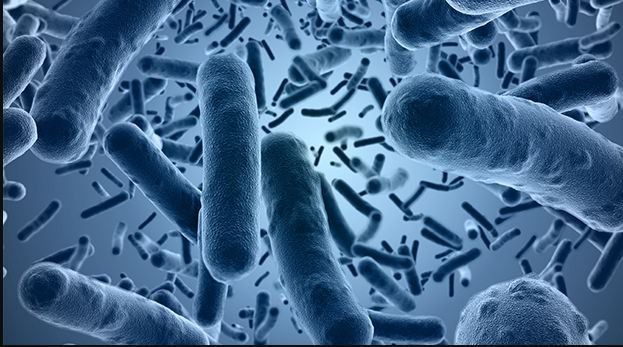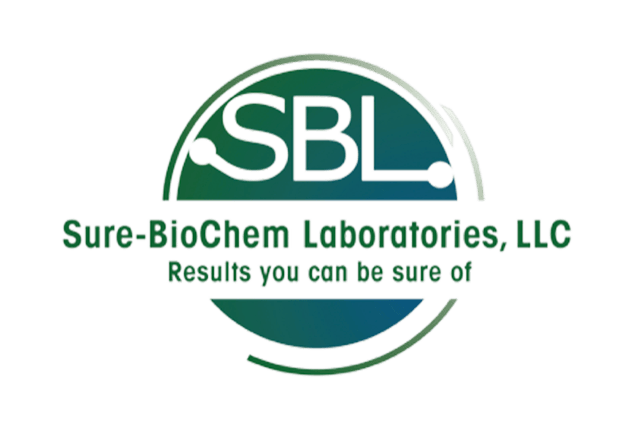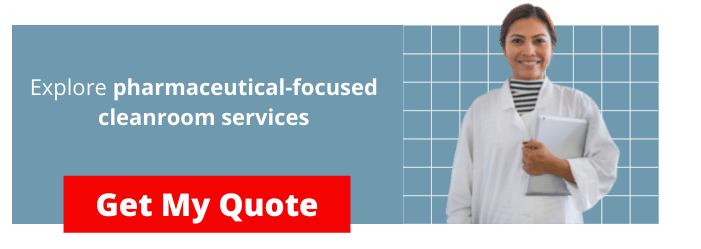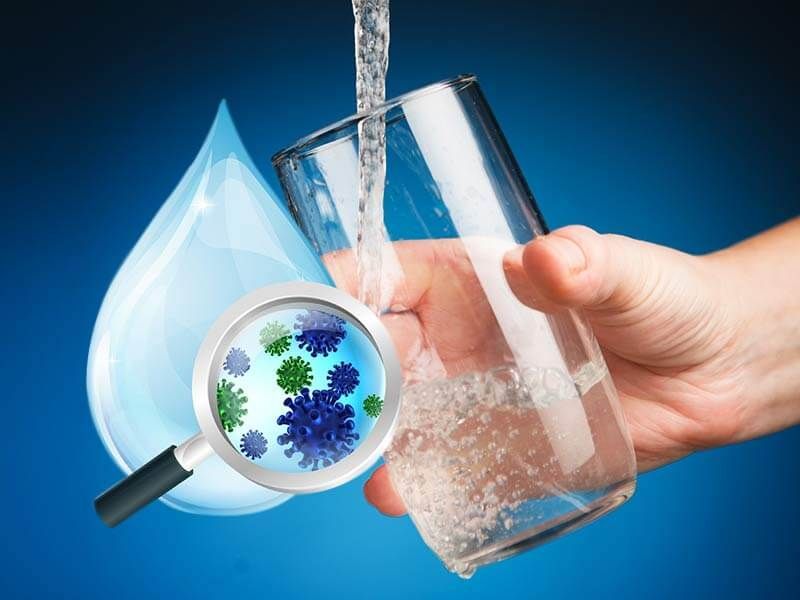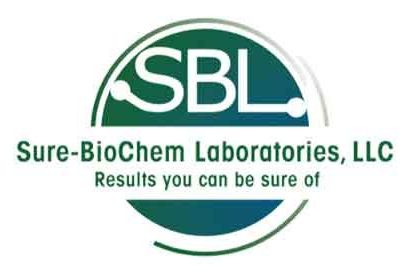Intro to Cleanroom Requirements for Pharmaceuticals
What is a cleanroom in pharmaceuticals?
According to
PharmTech
, “a cleanroom can be defined as an environment where the supply, distribution, and filtration of clean air” are appropriately regulated to meet the standards of government authorities.
In general, cleanrooms are important because they help protect manufactured products from contamination. More specifically, cleanroom requirements for pharmaceuticals are meticulously designed for the commercial survival of a successful product.
So what is the protocol of a cleanroom that ensures the best quality control?
Protocols to Know for Pharmaceutical Cleanrooms
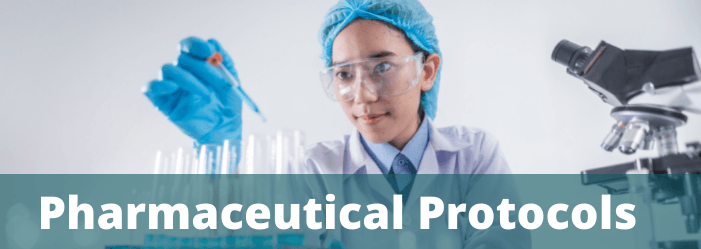
Cleanroom requirements for pharmaceuticals are enforced by the U.S Food and Drug Administration, which publishes the standards for manufacturers and the medical devices they use.
The importance of a cleanroom in pharma is that they have the ability to control humidity, dust, air pressure, microorganisms, and even the temperature. This helps ensure that the products we get for our health, whether it be over-the-counter or prescribed by your doctor, won’t pose a risk to us.
Pharmaceutical products created in a cleanroom are much more meticulously developed and are of the highest standard. Nothing is worse than worrying if the medicine you’re taking could pose a major danger to your health.
It can also help to
test
your pharmaceutical products beforehand to ensure your cleanroom environment is pure.
That’s why protocols are put into place to mitigate adverse effects of pharmaceutical products!
What is the FDA monitoring system?
There are many dos and don’ts in a cleanroom, but maintaining the air quality is an absolute must.
The monitoring system required by the FDA ensures that pharmaceutical companies test for airborne particles within their labs before, during, and after production.
One of the most well-known aspects of cleanroom requirements for pharmaceuticals is the ISO standard, which determines protocols for air cleanliness, tests, design, operation, and much more.
The cleaner the air, the better
Within the ISO standards, there are specific instructions for maintaining clean air. It must be so specific that pharmaceutical companies must measure the concentration of air particles and ensure they’re within a given threshold.
Every ISO has a predetermined air concentration threshold depending on the class of the cleanroom. For example, a class 8 cleanroom provides air cleanliness levels of a maximum of 100,000 particles per cubic foot.
Although this may sound complex at first, it’s important to know what class works best for a cleanroom in the pharmaceutical industry. A class 8 cleanroom is only one out of an entire ISO range of 1 - 9.
Recommendations for pharmaceutical cleanrooms
Once the class and air quality is determined, there are many protocols needed to maintain high standards during operation.
The FDA also prohibits certain items and activities within a cleanroom. For example, jewelry should not be worn and fast motions should be avoided.
Beyond this, workers should wear special gowns and always interlock the cleanroom doors to maintain air integrity.
Fundamentals of a Cleanroom Design
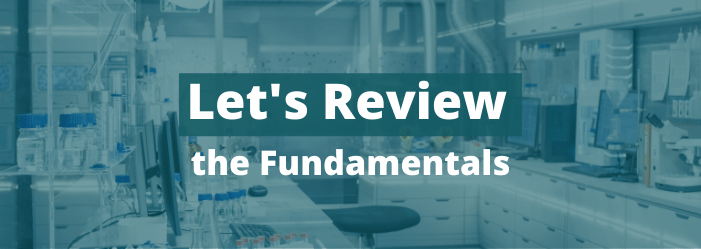
With something as complex as a cleanroom, the design of such an isolated space can get expensive to build and operate.
Many things must be taken into account such as the level of cleanroom needed, the space, what is the protocol of a cleanroom, and budget. There are many great
resources
out there to learn more about what’s needed for a cleanroom.
Primary and secondary cleanroom environments
Talk about the layout and equipment used for each of these two classifications
Primary pharmaceutical cleanrooms require advanced engineering equipment and piping layouts that work best with the air quality needed for the class. Next is to observe the key elements of the manufacturing process, which will likely involve offleading, vessel charging, and dispensing.
Secondary cleanroom requirements for pharmaceuticals are structured with a different intent in mind. Instead, the layout is determined by the blueprint and architecture. Then, products and people populate that space in a way where they can still synergize and have efficient traffic flow.
Essentials for a cleanroom layout
The main goal of a cleanroom in the pharmaceutical industry and its layout is to maximize the lower class areas around the main cleanroom suite. This equipment is designed to allow maintenance of the main room from the outside.
Laying out a cleanroom in this way helps minimize costs and maintenance procedures.
Personnel and materials should be kept separate. Entrance and exit routes are also required to be separate to prevent the cross contamination of clothing.
Selecting the right flooring
The greatest cause of contamination in a cleanroom is found on the floor since pollutants tend to travel downward.
Out of many dos and don’ts in a cleanroom, selecting the right flooring is also an important want to ensure compliance with GMP standards.
Pharmaceutical Technology
suggests that “the flooring should be resistant to chemicals and solvents, otherwise caustic solutions used for washing the cleanroom can cause damage.”
The flooring shouldn’t have any cracks because bacterial matter could accumulate within them. Finally, the right texture should help reduce the risk of slipping and falling.
Do's and don'ts
Some additional dos and don’ts in a cleanroom include making sure that you remove all jewelry and personal items from your pockets. It is also essential to avoid contamination by coughing or blowing your nose outside of the service area if possible, by quickly exiting before doing so.
A major thing to avoid is wearing cosmetics in the cleanroom. Makeup, eyeliner, aftershaves, and many other chemicals can easily contaminate products. Also avoid touching anything other than the product, which means you shouldn’t even touch your own face while operating in the service area.
Planning Needed for a Cleanroom in Pharmaceuticals
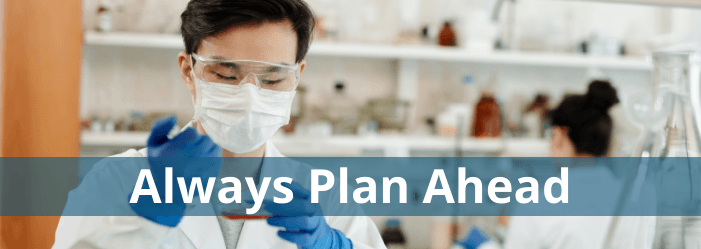
Setting up a cleanroom begins with the design phase. Knowing the importance of a cleanroom in pharma helps understand the purpose of your cleanroom, permitted particle concentration, and its manufacturing process.
Within the industry there are great fluctuations regarding what steps are needed in cleanroom planning, but the cleanroom requirements for pharmaceuticals remains the topic of today.
There are very detailed
lists
out there that go into deep detail about every step with setting up a cleanroom.
Plan your layout
The biggest thing to keep in mind with planning your layout is the flow of people and materials. A cleanroom in the pharmaceutical industry is an extremely sensitive place, due to the regulations set by the FDA on the medical products.
Hiring a professional
from Sure-BioChem Labs could help you determine what government regulations apply to your cleanroom and what class is needed for your process.
The most critical places should have single access points so employees don’t bump into each other. Some pharmaceutical processes could actually contaminate each other, so the layout should keep them separate.
Finally, the finished product should have appropriate outflow routes so they do not come into contact with the creation process again.
Calculate your space pressurization
An important protocol of cleanrooms is ensuring the right space pressurization.
Maintaining a positive airspace keeps contaminants from infiltrating the room. Although it’s impossible to perfectly maintain this positive space pressure, studies show that a very effective pressure differential would be 0.03 to 0.05 in w.g.
Anything above 0.05 in w.g does not provide “better” contamination control. A fine balance is needed.
Determine your remaining variables
Review the potential costs
Of course, costs are one of the biggest factors to consider when creating a cleanroom in pharmaceuticals.
A great practice is to develop a concept study or engineering study to model the potential costs of the cleanroom. Planning the facility specification, size, and layout is crucial to start tallying up the potential prices of these steps.
Get Professional Guidance on Your Pharmaceutical Cleanroom
Review the importance of a cleanroom for pharmaceuticals and explain SBL’s services with cleanrooms and the ability to ensure compliance with the government.
There are clearly many cleanroom requirements for pharmaceuticals that must be taken into consideration. However, knowing these protocols and government regulations are some of the core concepts needed to move forward. Now you know!
A cleanroom in the pharmaceutical industry is a delicate space that cannot be taken lightly. That’s why receiving professional help to calculate costs, review options, and set up your cleanroom could be your best bet.
Sure-Biochem Labs is here to help!
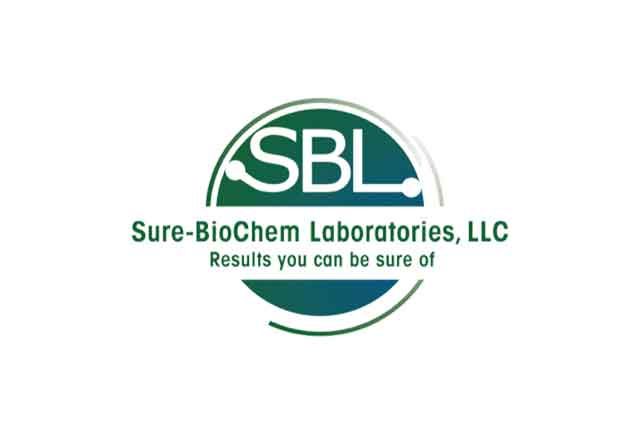
Need Our Help? Fill Out a Service Request Today!
We're here to assist you with all your needs. Please complete our service request form to ensure we provide the best possible service.
It's quick and easy—tell us a little about your request, and our team will reply promptly. We look forward to serving you!
Blog Contact Page
